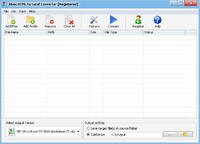Description
Daily Energy Calculation
Solar Calculator is an application that calculates the 24 hour energy requirement of a household and based upon that calculates the number of solar panels and batteries required by the solar system. It also calculates the rating of the charge controller and inverter required by the solar system. These are essential components of a solar system. The appliances are grouped together in to five categories namely entertainment, kitchen, air-conditioning, cleaning and lighting. Energy requirement of each category is calculated separately and displayed. The application contains the default wattage of every appliance but the user can also enter a custom value.
System Efficiency, Offline Usage and Depth of Discharge
A solar panel produces DC voltage which after conditioning by the charge controller is transferred to the batteries operating at 12 V or 24 V. But most of the electrical appliances require 220 volts AC at 50 Hz or 60 Hz. Thus the DC voltage is converted to 220 volts AC by the inverter. The energy storage and conversion processes are lossy in nature and therefore an extra margin must be added to overcome these losses.
Usually the energy storage requirement is calculated based on the assumption that all of the energy is first stored and then used at a later stage. A real system might use some of the energy in real time and this may result in a smaller number of required batteries than calculated. This is also taken care of in the application.
During the day when the solar panels are generating electricity the batteries are being charged while when a battery is being used to provide energy to the home appliances it is being discharged. The life of a battery is determined the number of charge/discharge cycles that it can undergo which depends of the depth of discharge e.g. if a battery is discharged to only 50% of its capacity it might provide you with 600 cycles whereas if its discharged to only 25% of its capacity it may provide 1500 cycles.
Hours of Charging
Typically the solar system would receive different amounts of solar energy during a day but we assume a constant amount of energy available throughout the charging hours (user select-able). This can be realistically achieved if the solar system uses a sun tracking device which maneuvers the direction of the solar panels towards the sun.
The hours of charging (peak sun hours) can be estimated by extracting data from 22 year record of flat-panel solar insolation data made available by NASA (0.84 million data points obtained after averging 22 year record). The user simply inputs the latitude and longitude of his location along with the month of interest and program outputs the peak sun hours per day. The hours of charging can also be calculated by using the Half-Sine model. In this model the latitude and day of the year is entered into the program and the output is peak solar hours per day. The Half-Sine model typically over estimates the peak sun hours by as much as 50%.
Another method to calculate the solar insolation and sun peak hours is using the Air Mass Coefficient. The Air Mass Coefficient defines the direct optical path length through the Earth’s atmosphere, expressed as a ratio relative to the path length vertically upwards. The sun peak hours estimated using the Air Mass Coefficient is much higher than that estimated using NASA Solar Insolation data and also slightly higher than that estimated by using the Half-Sine Model.
Inclination of Solar Panels
As the earth rotates on it axis the angle the sun rays arrive on a given location on the earth changes. Ideally the solar panels must continuously track the position of the sun to receive maximum amount of energy. But this is not always recommended as the tracking mechanism might in fact need more energy than is generated by tracking the sun. So a good compromise is to set the tilt of the solar panels according to the season (spring, summer, autumn and winter). Our program allows you to calculate the tilt for the four seasons based on the latitude. Another well accepted scheme is to set the tilt of the solar panels according to worst time of the year which is usually winter and lose some energy during the other seasons due to the non-ideal positioning of the solar panels.
Area Required by Solar Panels
You have estimated the size of the solar system that you need and are ready to get the equipment from the market to install it. But wait, are you sure you have enough space in your garden or your backyard or your rooftop to install the solar panels? How can you do a rough estimate of the area required by the solar panels? Our program allows you to calculate the total area required by the solar panels in square meters by simply inputting the efficiency of the solar panels and the total wattage of the solar panels. The three main types of solar panels in use are monocrystalline (17%-18%) polycrystalline (13%-15%) amorphous (6%-10%). The lower the efficiency of your solar panel the larger the area required.
With these results in hand a system designer can easily go ahead and implement a domestic solar system.





Reviews
There are no reviews yet.